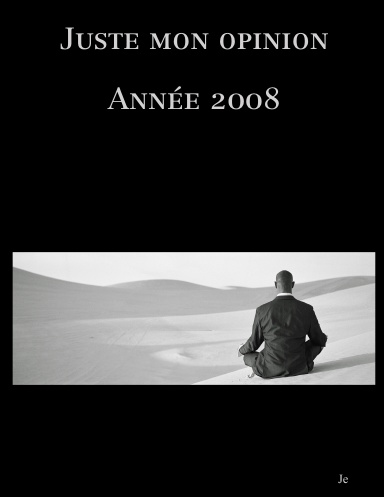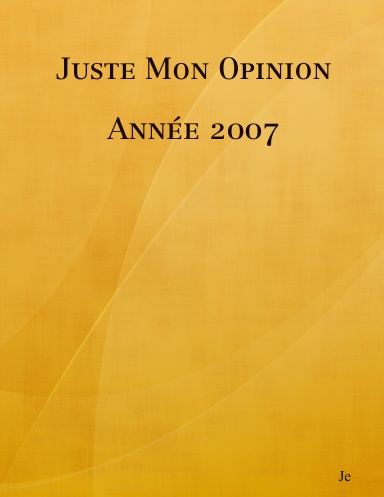"P2P and Human Evolution: Peer to peer as the premise of a new mode of civilization."
Contents
Chapter Headings
(Section headings are given at the start of each chapter)Executive Summary
Peer to Peer is mostly known to technologically-oriented people as P2P, the decentralized form of putting computers together for different kind of cooperative endeavours, such as filesharing and music distribution. But this is only a small example of what P2P is: it's in fact a template of human relationships, a "relational dynamic" which is springing up throughout the social fields. The aim of this essay is to describe and explain the emergence of this dynamic as it occurs, and to place it in an evolutionary framework of the evolution of modes of civilization. We emit the hypothesis that it both the necessary infrastructure of the current phase of 'cognitive capitalism', but at the same time, significantly transcends it thus pointing out the possibility of a new social formation that would be based on it in an even more intense manner. In chapter 1, you will find an initial definition and some acknowledgements, while an explanation of our methodology for research appears in an Appendix.After describing the emergence of P2P as the dominant mode, or 'form', of our current technological infrastructure (chapter 2), we then describe its emergence in the economic sphere (chapter 3), as a 'third mode of production', neither profit-driven nor centrally planned, but as a decentralized cooperative way of producing software (free software and open source movements), and other immaterial products, based on the free cooperation of 'equipotential' participants. It uses copyright and intellectual property rights to transcend the very limitations of property, because in free software, if you use it, you have to give at least the same rights to those who will use your modified version, and in open source software, you have to give them equal access to the source code.
Such commons-based peer production has other important innovations, such as it taking place without the intervention of any manufacturer whatsoever. In fact the growing importance of 'user innovation communities' (section 3.1.B), which are starting to surpass the role of corporate sponsored marketing and research divisions in their innovation capacities, show that this formula is poised for expansion even in the world of material production, provided the design phase is separated from the production phase. It is already producing major cultural and economic landmarks such as GNU/Linux, the Wikipedia encyclopedia, the Thinkcycle global cooperative research projects, and a Writeable Web/Participative Internet/Global Alternative Communications infrastructure that can be used by all, beyond the corporate stranglehold on mass media. Finally, CBPP exemplifies a new work culture (section 3.3.D), that overturns many aspects of the Protestant work ethic as described by Max Weber. In the world of development, it is exemplified by the emerging 'edge to edge development partnerships' as theorized by Jock Gill. In chapter 3, we also discuss the evolution of forms of cooperation (3.3.A), and of collective intelligence (3.3.B). It is also here that we are starting to address key analytical issues:
- what are the specific characteristics of the ideal-type of the P2P form (3.3.C), namely de-institutionalisation (beyond fixed organizational formats and fixed formal rules), de-monopolisation (avoid the emergence of collective individuals who monopolise power, such as nation-state and corporation), and de-commodification (i.e. production for use-value, not exchange value);
- we then demonstrate that P2P cannot be explained by the gift economy model of equal sharing and 'exchange of similar values', but rather by a model of communal shareholding (section 3.4), i.e. the creation of a Commons based on free participation both regarding input, and output (free usage even by non-producers) — we use Alan Page Fiske's fourfold model of intersubjective relationships to ground this comparison;
- we pay attention to the current power structure of cognitive capitalism, with a discussion of the thesis of McKenzie Wark's Hacker's Manifesto (section 3.4.E).
Chapter 5 discusses the discovery of P2P principles at work in physics, and in particularly in the physics of organisation, as developed by network theory, and its concept of 'small worlds', and hierarchical vs. egalitarian networks.
In chapter 6, we turn our attention to the cultural sphere. We claim and explain that the various expressions of P2P are a symptom of a profound cultural shift in the spheres of epistemology (ways of knowing) and of ontology (ways of feeling and being), leading to a new articulation between the individual and the collective (6.1.A), representing a true epochal shift. We then look at the spiritual field and how this affects the dialogue of civilizations and religions away from euro- and other exclusionist views in culture and religions (6.1.B); as well as to a critique of spiritual authoritarianism and the emergence of cooperative inquiry groups and participatory spirituality conceptions (6.1.C), as theorized in particular by John Heron and Jorge Ferrer. The new ideas related to cosmology and metaphysics are explained in 6.1.D, centered aroud the demise of the subject-object paradigm in favour of partnership-based visions of our relationships with matter and nature.
What does it all mean in terms of social change? In chapter 7 we examine if all of the above is just a collection of perhaps unrelated marginal trends, or rather, the view we espouse, represents the birth of a new and coherent social formation (section 7.1.A). In section 7.1.B we examine how P2P relates to the current system of cognitive capitalism (economics) or 'post' or 'late modernity' (cultural sphere), concluding that it is both within and beyond. Three scenarios are described (7.1.C): peaceful and complementary co-existence, the emergence of a cooperative civilization, and the destruction of P2P in the context of information feudalism. All of this leads us to concluding remarks on possible political strategies (7.1.D) to defend and expand P2P models, and to the principles behind the launch of the Foundation for P2P Alternatives.
History
The manuscript is an emanation of the Foundation for P2P Alternatives, 2005; it was written after several months of collaboration with Remi Sussan.Various versions of the document as a whole were produced, then in late 2005 it was transferred to this wiki, but without diagrams or (mostly) endnotes. What has now been reconstructed in 2017 is a full wiki version, integrating both changes to the wiki version, and endnotes and diagrams from the July 2005 document.
URLs of the whole document elsewhere
The URLs are given here for historical comparison.- version of 2005-03-01 http://www.altruists.org/static/files/P2P%20and%20Human%20Evolution%20(Michel%20Bauwens).pdf
- version of 2005-07-03 http://z.agoravox.fr/IMG/P2PandHumanEvolV2.pdf
- (now gone away) http://www.networkcultures.org/weblog/archives/P2P_essay.pdf
- Italian version at https://www.scribd.com/document/62818187/P2P-ed-Evoluzione-Umana
More Information
Summaries
- Martien van Steenbergen on P2P and Human Evolution – his summary points
- Summary on Cooperation Commons
- A shorter 10-page summary essay is available at http://www.ctheory.net/articles.aspx?id=499
Following
What to do
Time has moved on, and this essay/book is a great introduction to what was around in 2005. It is appropriate to enrich the links from here to later material, and to correct any mistakes, including obviously broken links, but only if you can find better ones to the same material.Otherwise, enjoy!
Source : http://wiki.p2pfoundation.net/P2P_and_Human_Evolution












Aucun commentaire:
Enregistrer un commentaire